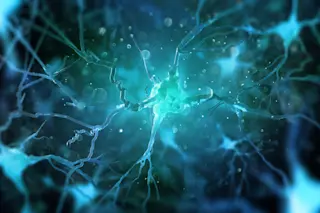Neurons in the brain. (Credit: Andrii Vodolazhskyi/Shutterstock) One of the most basic things our bodies do is make new cells. It's what allows tissues to grow and heal, and allows our bodies to continually rejuvenate themselves. When it comes to cellular replenishment, one of the places researchers are most interested in is the brain. The formation of new brain cells is of critical interest to researchers studying everything from brain injuries to aging to mental illnesses like depression.
But researchers might be experiencing a bit of whiplash right now. Two papers, published just under a month apart, stand at odds with each other. One, led by researchers from the University of California, San Francisco, and published in Nature in early March, suggests that the hippocampus, a brain region important in the formation of memories, learning and emotional regulation, stops making new neurons after childhood, something that contradicts most previous research. ...














